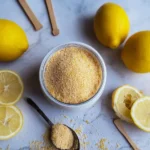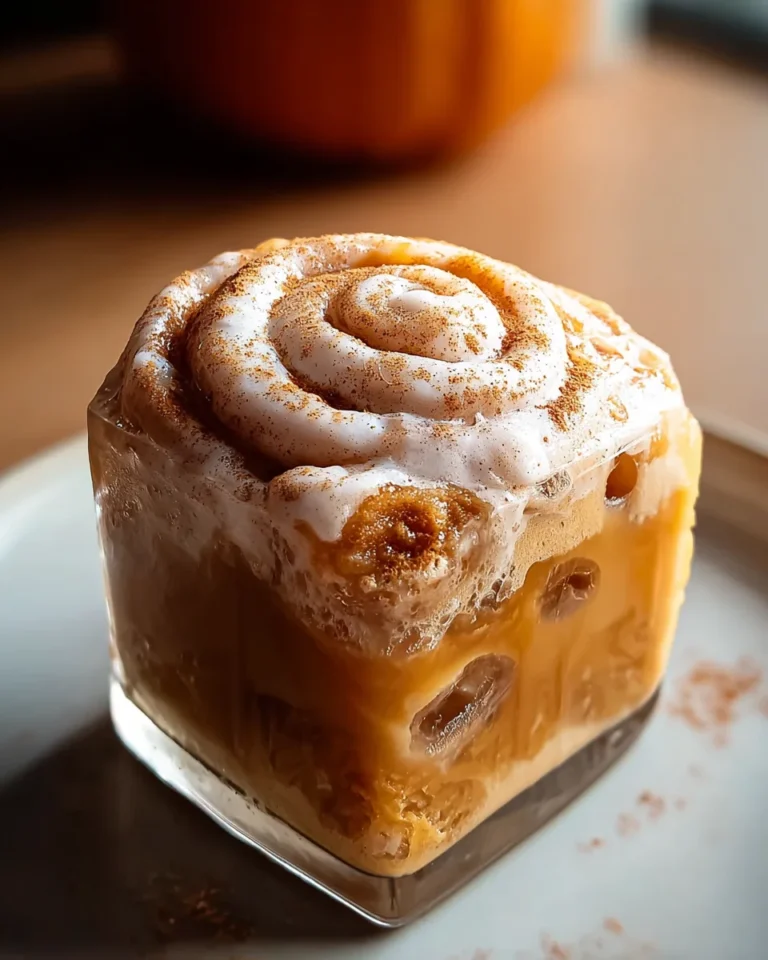Homemade Dried Lemon Peel Powder
Come learn how to make Homemade Dried Lemon Peel Powder! This vibrant, zesty seasoning not only enhances your dishes but is also packed with vitamin C. Perfect for various occasions, this homemade powder can elevate sweet treats, savory meals, and even DIY body care products. You’ll love how easy it is to create a unique flavor booster that can last over a year when stored properly.
Why You’ll Love This Recipe
- Easy to Make: With just lemon peels and a dehydrator or oven, you can whip up this powder effortlessly.
- Versatile Usage: Use it in your favorite recipes, spice blends, or even in tea for a refreshing twist.
- Health Benefits: Rich in vitamin C, this lemon peel powder adds nutritional value to your meals.
- Long Shelf Life: When stored correctly, your homemade lemon powder can last for over a year.
- Cost-Effective: Transform leftover lemon peels into a delicious seasoning instead of throwing them away.
Tools and Preparation
Before starting your journey to create homemade dried lemon peel powder, gather the necessary tools. Having the right equipment makes the process smoother and more efficient.
Essential Tools and Equipment
- Food dehydrator
- Baking sheet
- Blender or food processor
- Fine mesh strainer (optional)
- Glass air-tight container (like a mason jar)
Importance of Each Tool
- Food dehydrator: This tool allows for consistent drying without overheating or burning the lemon peels.
- Blender or food processor: Essential for turning dried peels into fine powder quickly and efficiently.
- Fine mesh strainer: Helps achieve a smooth texture by sifting out any larger bits after grinding.
Ingredients
For the Homemade Dried Lemon Peel Powder
- Lemon peels
How to Make Homemade Dried Lemon Peel Powder
Step 1: Wash and Peel Your Lemons
- Rinse the lemons thoroughly under cool water.
- If using thin-skinned sweet lemons (like Meyer lemons), peel them whole like an orange.
- For thicker-skinned lemons (such as Eureka lemons), use a vegetable peeler to remove the outer rind while leaving most of the white bitter pith behind.
Step 2: Prepare for Drying
- Lay out the lemon peels in a single layer on your food dehydrator racks or on a baking sheet if using an oven.
Step 3: Dry the Lemon Peels
- Set your dehydrator to 95-105°F or turn your oven to its lowest heat setting.
- The drying time will vary based on thickness; it may take several hours up to a couple of days.
Step 4: Check for Doneness
- The lemon peels are finished drying when they easily crack and snap in half instead of bending.
Step 5: Grind into Powder
- Use a blender, food processor, or coffee grinder to turn the dried lemon peels into fine powder.
Step 6: Sift (Optional)
- Pour the ground lemon powder through a fine mesh strainer over a bowl.
- Re-grind any leftover hard bits until fully pulverized.
Step 7: Store Your Lemon Powder
- Transfer the finished lemon powder into a glass air-tight container like a mason jar with a tight-fitting lid.
- Keep it in a dry, cool place such as your pantry.
When properly dried and stored, enjoy your homemade lemon peel powder for over a year!
How to Serve Homemade Dried Lemon Peel Powder
Homemade dried lemon peel powder is a versatile seasoning that adds a burst of citrus flavor to various dishes. Here are some creative ways to incorporate this delightful powder into your meals.
In Smoothies
- Add a teaspoon of lemon peel powder to your morning smoothie for an extra zing and boost of vitamin C.
In Baking
- Mix lemon peel powder into cookie or cake batters for a refreshing citrus twist in your baked goods.
As a Seasoning
- Sprinkle it over roasted vegetables or grilled fish to enhance the dish’s flavor profile with a zesty touch.
In Dressings
- Whisk a small amount of lemon peel powder into salad dressings for added depth and brightness.
In Herbal Teas
- Stir in a pinch of lemon peel powder into herbal teas for a fragrant and uplifting beverage.
In Spice Blends
- Combine with other spices like paprika and garlic powder to create unique seasoning blends perfect for meats or veggies.

How to Perfect Homemade Dried Lemon Peel Powder
To ensure your homemade dried lemon peel powder is both flavorful and long-lasting, consider these tips.
- Choose fresh lemons: Use ripe, organic lemons to maximize flavor and health benefits in your lemon peel powder.
- Proper drying: Make sure the peels are completely dried before grinding; they should snap easily without any moisture.
- Fine grinding: For the best texture, grind the dried peels until they are a fine powder, ensuring even distribution in recipes.
- Sifting is optional: If you prefer a smoother texture, sift the ground powder to remove any larger particles before storing.
- Storage matters: Keep your lemon peel powder in an airtight jar away from light and moisture to maintain freshness.
- Experiment with usage: Don’t hesitate to try it in unexpected dishes—its versatility can surprise you!
Best Side Dishes for Homemade Dried Lemon Peel Powder
You can elevate many side dishes with homemade dried lemon peel powder. Here are some excellent pairings:
- Lemon-Garlic Roasted Potatoes – Toss baby potatoes with olive oil, garlic, and a sprinkle of lemon peel powder before roasting for bright flavors.
- Citrus Quinoa Salad – Mix cooked quinoa with diced veggies, nuts, and lemon peel powder for an aromatic and nutritious salad.
- Lemon Zest Rice – Fluff cooked rice with butter and stir in lemon peel powder for an easy side that complements many main dishes.
- Steamed Asparagus – Lightly drizzle steamed asparagus with olive oil and sprinkle it with lemon peel powder for a zesty finish.
- Savory Lemon Couscous – Prepare couscous as usual, then fold in herbs and lemon peel powder for added flavor.
- Zesty Broccoli Slaw – Toss shredded broccoli with mayonnaise, vinegar, and lemon peel powder for a refreshing slaw that pairs well with grilled meats.
- Lemon-Herb Roasted Carrots – Roast carrots tossed in olive oil, herbs, and lemon peel powder until tender and caramelized.
- Citrus Sweet Potatoes – Mash sweet potatoes mixed with butter and lemon peel powder for a delightful twist on traditional mashed sweet potatoes.
Common Mistakes to Avoid
Making homemade dried lemon peel powder is simple, but there are common mistakes that can affect the quality of your final product.
- Using unwashed lemons – Always wash your lemons thoroughly before peeling to remove pesticides and dirt. This ensures your powder is clean and safe to use.
- Not drying completely – If the lemon peels aren’t fully dried, they can mold. Make sure they crack and snap when done, indicating they’re completely dry.
- Ignoring storage conditions – Storing your lemon powder in a humid environment can spoil it quickly. Keep it in a cool, dry place for longevity.
- Over-processing the peels – Blending the peels too much can create clumps instead of a fine powder. Pulse until finely ground but stop before it turns into paste.
- Skipping the sifting step – Not sifting the powder may leave hard bits that won’t dissolve well in recipes. Sift to ensure a smooth texture for your seasoning.

Storage & Reheating Instructions
Refrigerator Storage
- Store your homemade dried lemon peel powder in an airtight glass container.
- It can last several months if kept in the refrigerator.
Freezing Homemade Dried Lemon Peel Powder
- Place the powder in a freezer-safe bag or container.
- It can be frozen for up to a year without losing flavor.
Reheating Homemade Dried Lemon Peel Powder
- Oven – Preheat to 200°F and spread the powder on a baking sheet for about 5 minutes to refresh its aroma.
- Microwave – Heat in short bursts of 10-15 seconds, checking frequently to avoid burning.
- Stovetop – Gently warm in a pan over low heat, stirring occasionally to enhance flavor.
Frequently Asked Questions
Here are some common questions about making homemade dried lemon peel powder.
How do I use Homemade Dried Lemon Peel Powder?
You can add it to baked goods, marinades, or even sprinkle it on salads for a zesty flavor boost.
What are the health benefits of Lemon Peel?
Lemon peel is rich in vitamin C and antioxidants, which can support immune health and improve skin quality.
Can I use other citrus peels?
Yes! You can experiment with orange or lime peels using similar methods for delightful variations.
How long does Homemade Dried Lemon Peel Powder last?
When stored properly in an airtight container, it lasts over a year without losing potency.
Is Homemade Dried Lemon Peel Powder gluten-free?
Absolutely! This seasoning is naturally gluten-free and perfect for various dietary needs.
Final Thoughts
Homemade dried lemon peel powder is not only easy to make but also versatile in cooking and baking. You can customize it by blending with other spices or adjusting the drying time. Give this recipe a try and explore new flavors in your meals!

Homemade Dried Lemon Peel Powder
- Total Time: 0 hours
- Yield: Approximately 12 teaspoons (or more depending on lemon size)
Description
Discover how easy it is to make Homemade Dried Lemon Peel Powder. Enhance your dishes with this delightful seasoning today!
Ingredients
- Fresh lemons (for the peels)
Instructions
- Thoroughly wash the lemons and peel them using a vegetable peeler, avoiding most of the bitter white pith.
- Arrange the lemon peels in a single layer on dehydrator racks or a baking sheet.
- Set your dehydrator to 95-105°F or preheat the oven to its lowest setting.
- Dry the peels until they snap easily without bending; this may take several hours to a few days.
- Grind the dried peels into a fine powder using a blender or food processor.
- Optional: Sift through a fine mesh strainer for a smoother texture.
- Store in an airtight glass container in a cool, dry place.
- Prep Time: 15 minutes
- Cook Time: Varies based on drying method
- Category: Seasoning
- Method: Dehydrating
- Cuisine: American
Nutrition
- Serving Size: 1 teaspoon (2g)
- Calories: 6
- Sugar: 0g
- Sodium: 0mg
- Fat: 0g
- Saturated Fat: 0g
- Unsaturated Fat: 0g
- Trans Fat: 0g
- Carbohydrates: 2g
- Fiber: 1g
- Protein: 0g
- Cholesterol: 0mg







